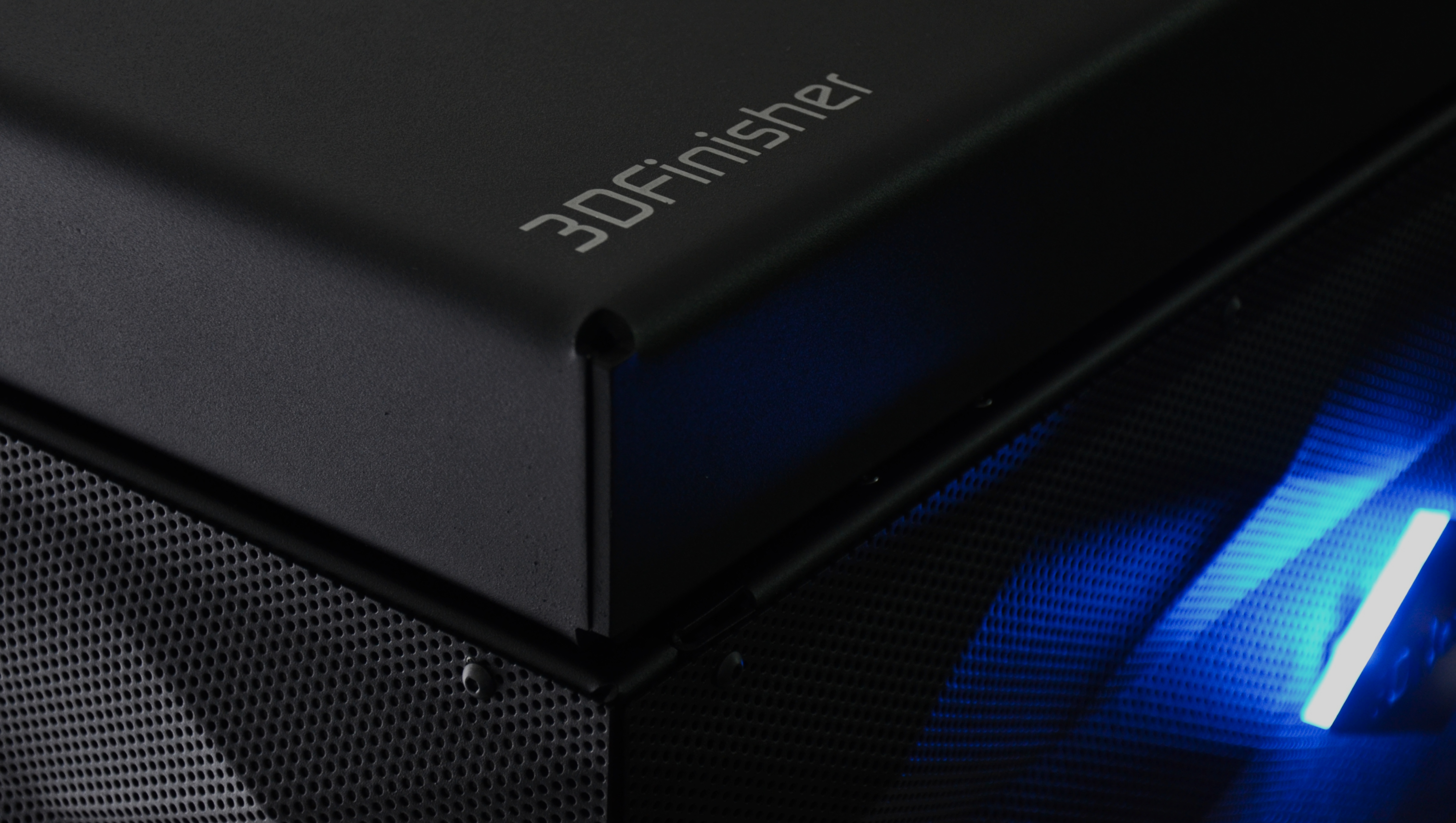Transform your prototype into a product.

The parts to be processed should be placed into the basket, making sure they are not in contact with each other. The disposable bottle containing the substances used in the finishing process should be inserted into the unit.
Inside the chamber, the parts are uniformly processed in a controlled atmosphere. The process consists of several steps, at the end of which the parts are ready for use.
The processing phase is followed by a 40-minute reset and filter phase to prepare the machine for further processing.
No external exhaust systems or fume hoods are required. Single-use bottles do not require special disposal methods.
The parts to be processed should be placed into the basket, making sure they are not in contact with each other. The disposable bottle containing the substances used in the finishing process should be inserted into the unit.
Inside the chamber, the parts are uniformly processed in a controlled atmosphere. The process consists of several steps, at the end of which the parts are ready for use.
The processing phase is followed by a 40-minute reset and filter phase to prepare the machine for further processing.
No external exhaust systems or fume hoods are required. Single-use bottles do not require special disposal methods.
The 3DFinisher was created as a tool to support additive manufacturing processes and address some of the structural limitations of 3D manufacturing, such as poor output quality, porosity, and non-waterproofing. The 3DFinisher can be used to post-process 3D printed parts, as well as to finish traditionally manufactured parts, such as cellulose acetate parts for eyeglasses.
The 3DFinisher enables the large-scale use of 3D printing to produce components on demand, eliminating the economic and environmental impact of traditional supply chains. The mechanical properties guaranteed by the finishing process make the parts suitable for industrial automation, hydraulics and vacuum systems.
The use of additive manufacturing in the automotive industry has expanded rapidly, not only for prototyping but also for mass production. Parts treated with the 3DFinisher are particularly suitable for painting and metallization. The treatment also improves mechanical properties and aerodynamic efficiency.
Additive manufacturing technologies offer unprecedented design freedom and significantly speed up prototyping compared to traditional technologies. The 3DFinisher makes it possible to obtain parts or prototypes with a quality and aesthetic output that meets the standards required in this field.
The 3DFinisher was created as a tool to support additive manufacturing processes and address some of the structural limitations of 3D manufacturing, such as poor output quality, porosity, and non-waterproofing. The 3DFinisher can be used to post-process 3D printed parts, as well as to finish traditionally manufactured parts, such as cellulose acetate parts for eyeglasses.
The 3DFinisher enables the large-scale use of 3D printing to produce components on demand, eliminating the economic and environmental impact of traditional supply chains. The mechanical properties guaranteed by the finishing process make the parts suitable for industrial automation, hydraulics and vacuum systems.
The use of additive manufacturing in the automotive industry has expanded rapidly, not only for prototyping but also for mass production. Parts treated with the 3DFinisher are particularly suitable for painting and metallization. The treatment also improves mechanical properties and aerodynamic efficiency.
Additive manufacturing technologies offer unprecedented design freedom and significantly speed up prototyping compared to traditional technologies. The 3DFinisher makes it possible to obtain parts or prototypes with a quality and aesthetic output that meets the standards required in this field.
3DFinisher is the only professional device that enables 3D printed objects to match the quality of injection molded parts.
It is not a 3D printer: it is a device designed for the surface finishing of parts made of ABS, ASA, PETG and cellulose acetate.
On average, a processing cycle lasts one hour
The 3DFinisher works on ABS, ASA, PETG and cellulose acetate. Other materials coming soon!
It is possible to perform a complete cycle without losing the detail of the processed parts. The result depends on the parameters and the degree of finishing required.
No. The limited amounts of chemicals and the filtration system allow it to be used in any environment without the need to install fume hoods and exhaust systems.
Yes. The 3DFinisher is CE and TUV marked. The final user is never in contact with any chemicals.
Write to us and ask for a free finishing!